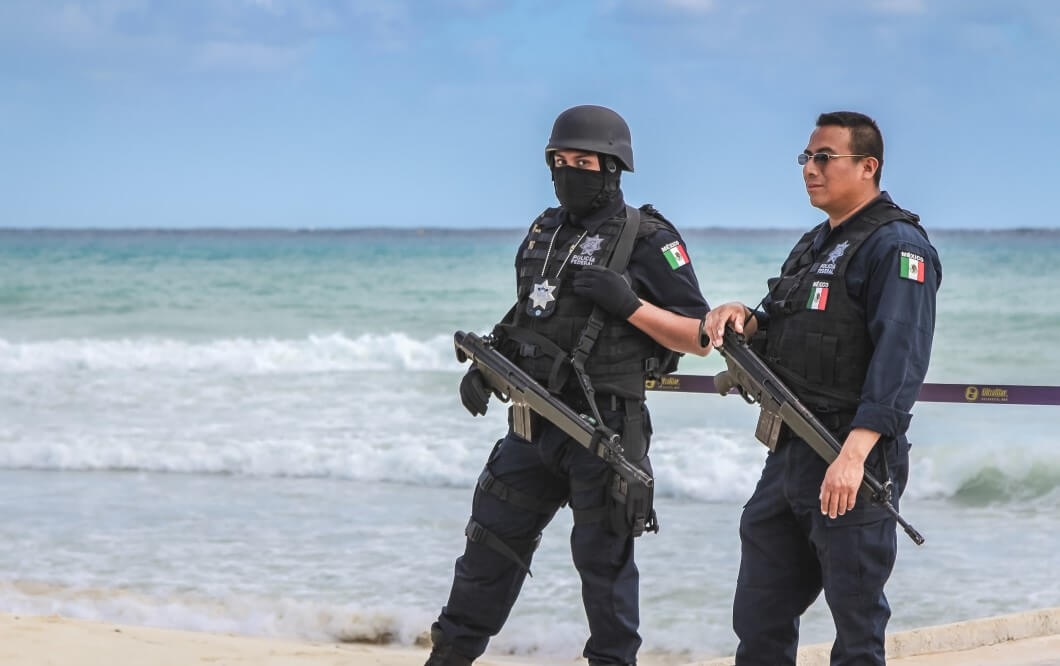Cancun, a Mexican paradise, was once considered relatively safe. But, about ten years ago, a territorial showdown began between the warring gangs of drug dealers. However, they originally took place in nightclubs or working-class neighborhoods on the outskirts of Cancun. The victims were mostly young Mexicans. Now robberies and shootings take place in broad daylight and in luxury hotels, and on beaches, and in bars, and at discos frequented by foreign tourists.
This is bad news for Cancun’s tourism sector, which has already been hit hard by the coronavirus. Even more troubling to experts, however, are signs that the international mafia appears to be targeting Mexico’s Caribbean coast as a hub for its operations.
The latest evidence of this was a shooting a few days ago at a luxury hotel on the Riviera Maya. Two Canadians were killed and a woman was injured. The shooting took place in the middle of the day at the hotel pool and caused panic. Two of the dead, as it soon became clear, were on the international wanted list, were engaged in drug and arms trafficking, as well as money laundering.
According to media reports, the two worked for Vietnamese mafia boss Kong Dinh, whose main base of operations is in the US and Canada. It looked like a settling of scores in the environment: the killer checked in as a guest under an assumed name, and then disappeared into the jungle surrounding the hotel.
“The Caribbean has become an attractive destination for international criminals,” Mafia expert Eduardo Guerrero writes in El Financiero newspaper. “It was a combination of beaches, bars, and lax immigration controls that contributed to this.” Falco Ernst of the International Crisis Group agrees: “Cancun and the Riviera Maya are crime magnets because there is a lot of money circulating there. The Caribbean is also a major platform for international drug trafficking.”
And it’s also a lucrative region for cartels: Of the 45 million tourists who visited Mexico every year before the pandemic, 40 percent ended up in Cancun. The beaches are especially popular with young party-goers, who often use a lot of alcohol and drugs.
The most famous international mafia boss arrested in Cancun last year was Romanian Florian Tudor. His gang specialized in credit card cloning. “But there are other gangs from Eastern Europe and Russia,” says Guerrero, who worked for Mexican intelligence. Chinese triads also engage in piracy in Mexico, smuggling timber and exotic animals, mining products, and chemical drugs.

The Mexican mafia is getting more and more ramified
Until now, most of this criminal business is still carried out in parallel with the drug trafficking and racketeering of Mexican gangs. But Eduardo Guerrero fears that “international cells may offer their services and contacts to Mexican criminals, especially in the areas of money laundering, drug trafficking, arms trafficking and human trafficking.”
The Mexican mafia has become more and more ramified in recent years. “The region is home to the largest drug cartels and numerous local criminals,” said Falco Ernst of Crisis Group Mexico.
This somewhat confusing mixture is increasingly leading to conflicts in the underworld, which often end in showdowns, such as last November’s shootout in a hotel in Puerto Morelos. In a small, quiet fishing village, guests apparently asked the hotel staff how to buy cocaine. They made several calls, but, according to investigators, they were poorly coordinated: as a result, representatives of two different cartels arrived at the hotel at the same time, which led to a shootout in which two dealers were killed.
The government cannot stop corruption
According to Ernst, the escalation of violence is also due to the “lack of strategy on the part of the government.” True, before Christmas, President Andres Manuel López Obrador sent a contingent of national guards to the region. “But there is no coherent strategy to dry up the swamp between the state and criminals and fight corruption,” says Ernst.
Guerrero hopes strong pressure from the tourism industry will force politicians to act. Tourism accounts for almost nine percent of the gross domestic product. There are positive examples of the fight against crime, for example, in the industrial city of Monterrey, where the concerted actions of politicians, big businessmen and several international intelligence agencies led to success in the fight against the mafia.
But there are also negative examples, for example, Acapulco, which has lost its image as a tourist citadel. Overall, the country is currently in a reversal state in terms of public safety. More and more new popular tourist destinations are becoming victims of the mafia.

